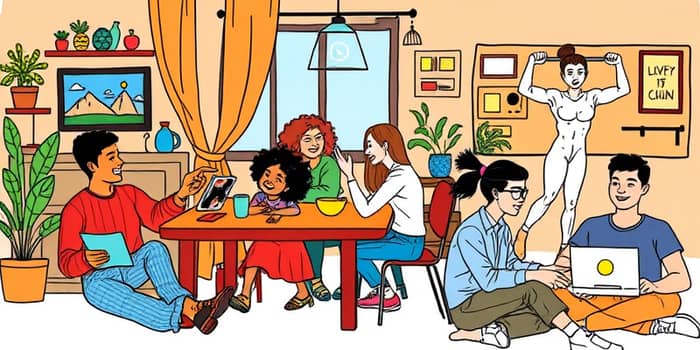
As 2025 unfolds, the landscape of U.S. spending is undergoing a profound transition. While consumers once flocked to purchase tangible products, they now channel more of their budgets into services—from digital subscriptions to experiential offerings. This article explores the forces driving this shift, the demographic nuances at play, and practical guidance for businesses and individuals to thrive in this evolving economy.
Despite a backdrop of stable inflation and robust labor market and low unemployment, real consumer spending growth has decelerated. Businesses and households alike must adapt to a world where experiences and convenience reign supreme.
In Q1 2025, real personal consumption expenditures rose only 1.2% annually, marking the slowest pace since the pandemic’s end. For the full year, real spending is forecast to rise just 1.4%, barely edging up to 1.5% in 2026.
Durable goods have borne the brunt of this slowdown. After a 12% surge in late 2024, expenditures on items like appliances and vehicles fell by 3.8% in Q1 2025. Nondurable goods—such as clothing and groceries—look set to grow 1.4% this year, while services are expected to expand by 1.5% in both 2025 and 2026.
Monthly data reflect this trend: May saw a 0.1% dip in overall personal consumption expenditures, following modest gains of 0.2% in April and 0.7% in March. Consumers are exercising caution, mindful of rising borrowing costs and lingering inflation expectations.
The tilt toward services is driven by several intersecting factors. After pandemic-era accumulation of durable goods, consumers now prioritize flexibility, convenience, and experience. Meanwhile, tariff increases and higher interest rates have disproportionately inflated the cost of imported and financed goods, making services relatively more affordable.
Consumers are gravitating toward experience-driven and convenience-focused spending trends, whether joining a live virtual cooking class or renewing a fitness membership. These choices reflect a desire for engagement, community, and ongoing value.
Different age groups are responding in unique ways. Gen Z, still building income, is more likely to dip into savings to maintain service subscriptions. They value creators, digital communities, and on-demand access. In contrast, older consumers worry most about inflation, although many still feel optimistic about economic recovery.
The University of Michigan consumer sentiment index fell 18.2% between December 2024 and June 2025, and year-ahead inflation expectations jumped from 3.3% to 5.1%. Such concerns are reshaping how and where households allocate their budgets.
Tariff hikes on imports and elevated interest rates have cooled demand for big-ticket items. Inventory pre-buildup has delayed price passthrough, but by mid-2025, higher costs for durable goods are expected to be fully reflected in retail prices.
Meanwhile, escalating credit card and auto loan delinquencies reveal the limits of debt-fueled consumption. Many households are now prioritizing recurring service fees over new furniture or electronics, seeking predictable costs rather than one-off purchases.
Businesses and consumers can both benefit from understanding and adapting to this shift.
Consumers should also refine their spending strategies:
Looking ahead, the service sector is poised to remain the engine of consumer spending growth. As businesses innovate and consumers reallocate their budgets, the economy will continue to adapt.
Success in this new era demands subscription-based business models flourishing rapidly and consumers making intentional choices about their spending. By embracing digital platforms, cultivating community-focused experiences, and maintaining financial resilience, all stakeholders can find opportunity in the shift from goods to services.
The path forward is clear: invest in connection, prioritize value, and champion resilience through adaptability and innovation. In doing so, businesses will cultivate loyal customers, and individuals will enjoy richer, more fulfilling experiences.
References













